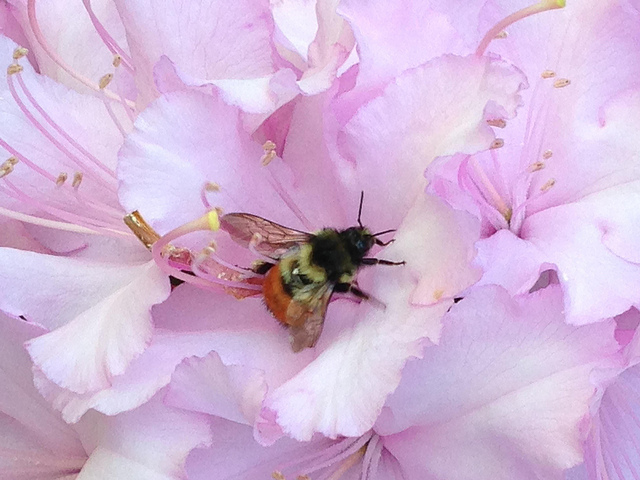
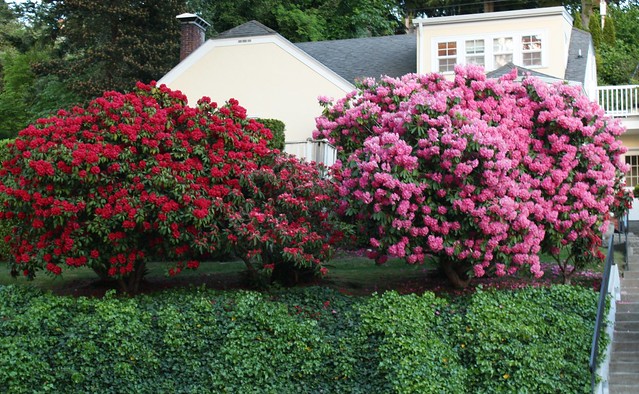
Spring time is Rhododendron time around the world. These prolific bloomers are native to Asia, North America, Australia, and Europe. They are members of the Genus Rhododendron and the Family of Ericaceae (Heaths). The name is derived from ancient Greek (rhódon “rose” or “red“) and déndron “tree”). There are some 800 to 1,000 species and 28,000 cultivars listed by the Royal Horticultural Society. Azaleas are a subgenera of Rhododendron.
Mostly known for the brilliant colors of their flowers, Rhodies as they are affectionately called, are also rated on the attractiveness of their foliage. In official ratings of the bushes, they receive a 1 to 5 rating on both the flower and the foliage, with a 5 being the highest. Thus like the example shown below, a 3/5 would indicate that the flower is averagish while the leaf is exceptional.
20013 Rhododendron argyrophyllum ssp. nankingense ‘Chinese Silver’ — (HY, hy, Argyrophyllum) 5’, 0oF, E-EM, 3/5. Perhaps one of the best foliage plants in the genus Rhododendron. The leaves are very shiny above, looking almost to be made of wax.
While their flower and leaves are very attractive, Rhodies can also be toxic, particularly to animals. Although humans probably don’t eat the flowers, they can be affected by eating honey made from the flower’s nectar. If you have watched bees nosing around in the Rhodie blossoms all day as they do in my yard this will make sense.
>
Some species of rhododendron are poisonous to grazing animals because of a toxin called grayanotoxin in their pollen and nectar. People have been known to become ill from eating honey made by bees feeding on rhododendron and azalea flowers. Xenophon described the odd behaviour of Greek soldiers after having consumed honey in a village surrounded by Rhododendron ponticum during the march of the Ten Thousand in 401 BC. Pompey’s soldiers reportedly suffered lethal casualties following the consumption of honey made from Rhododendron deliberately left behind by Pontic forces in 67 BC during the Third Mithridatic War. Later, it was recognized that honey resulting from these plants has a slightly hallucinogenic and laxative effect.[29] The suspect rhododendrons are Rhododendron ponticum and Rhododendron luteum (formerly Azalea pontica), both found in northern Asia Minor.
So, here is a display of Rhodies and Azaleas from my own neighborhood in Bellingham WA. All were photographed on my walks using either my Canon Rebel EOS or my iphone-5. They are presented in no particular order and I do not identify the species or cultivars as that would be an undertaking far beyond my ken and my patience.

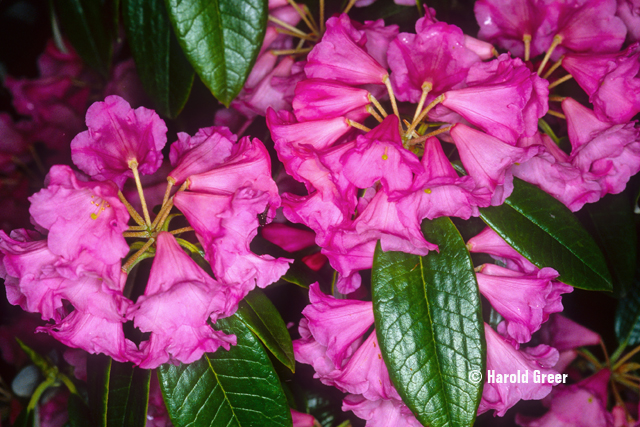
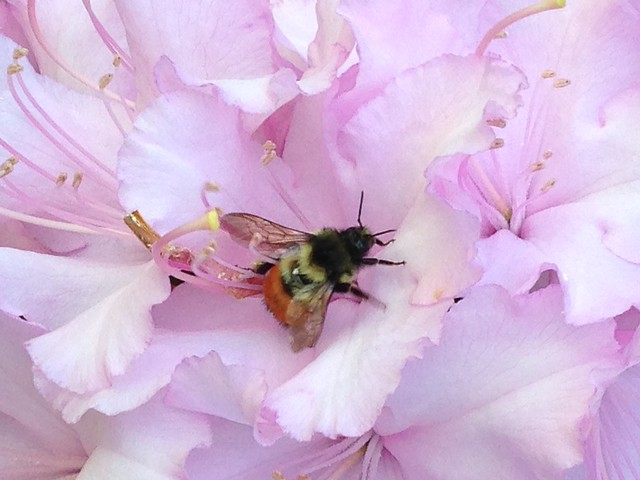

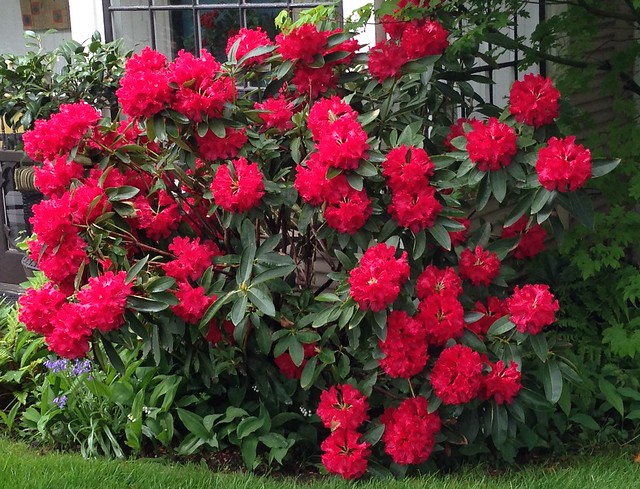
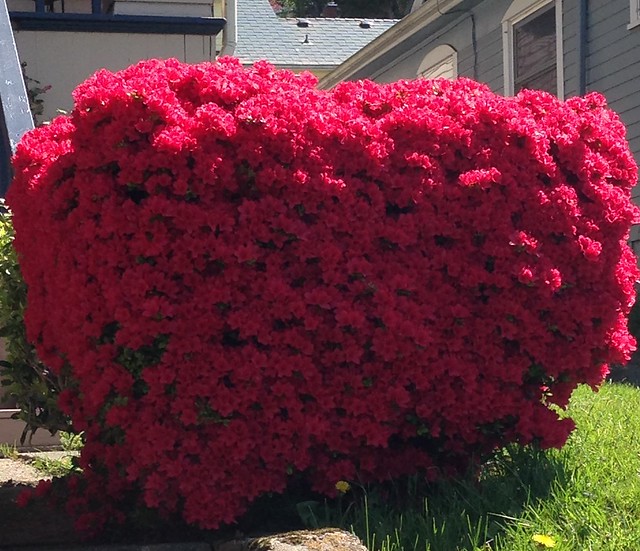


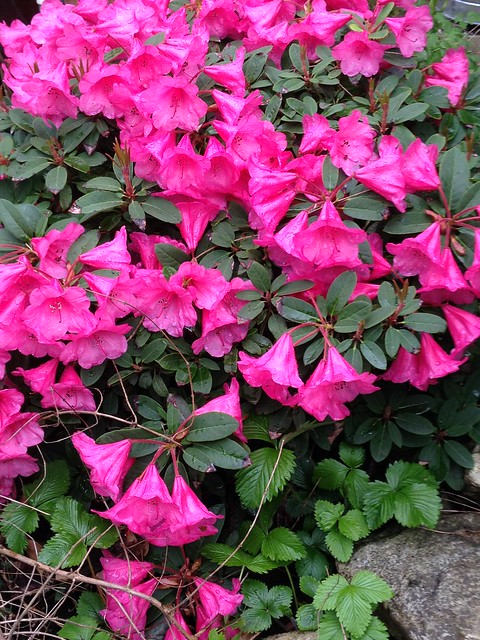
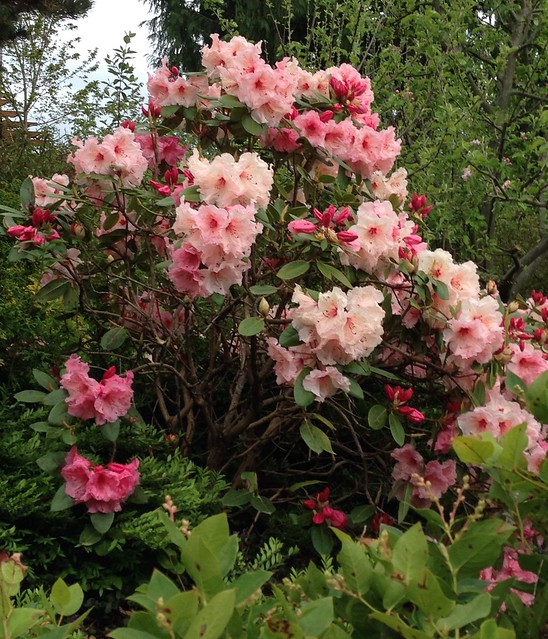

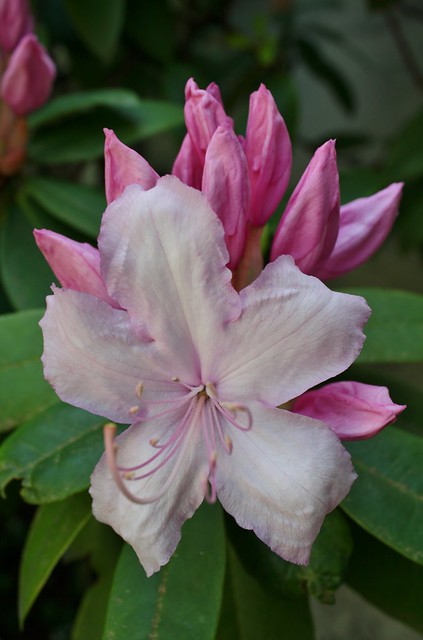

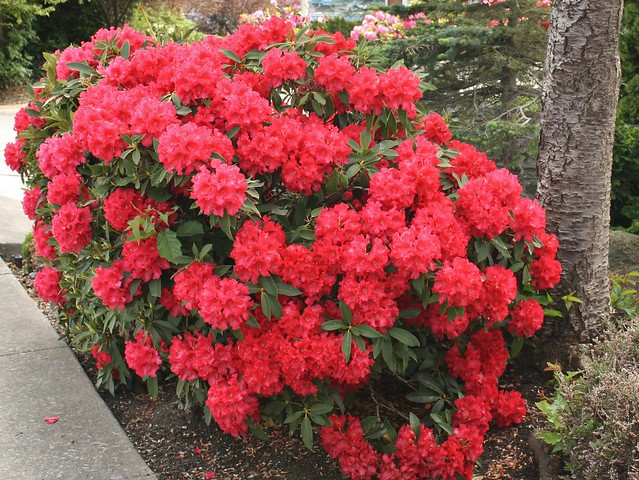
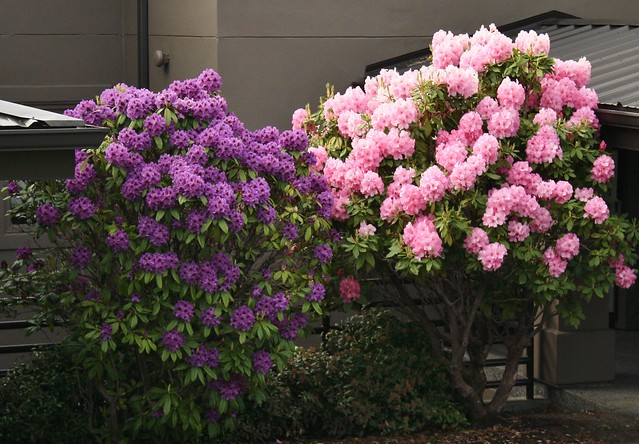
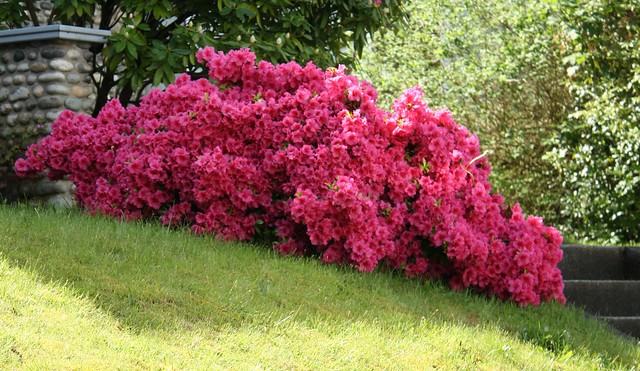
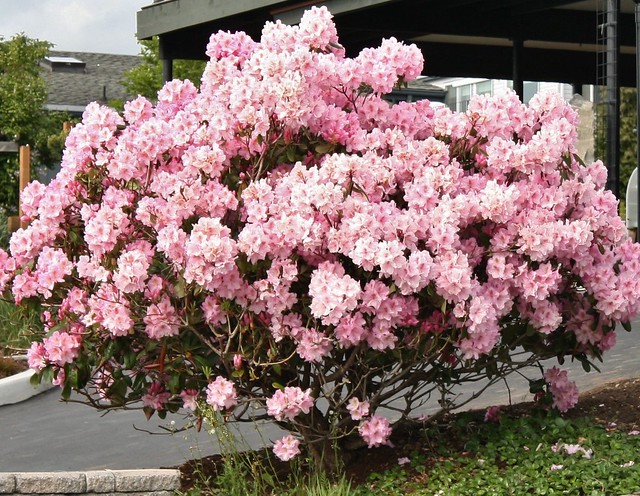
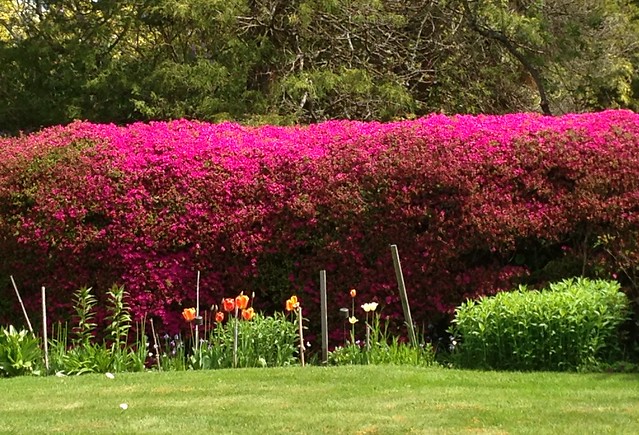
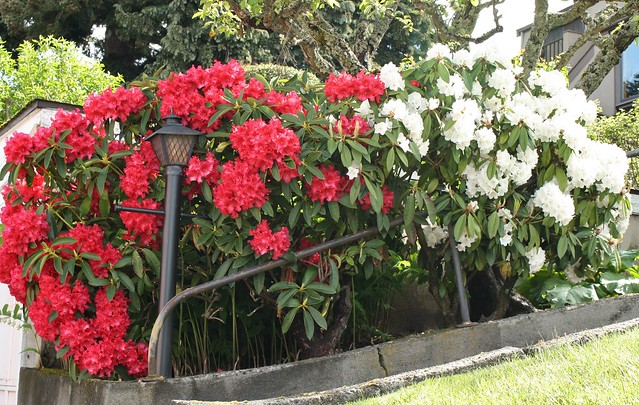

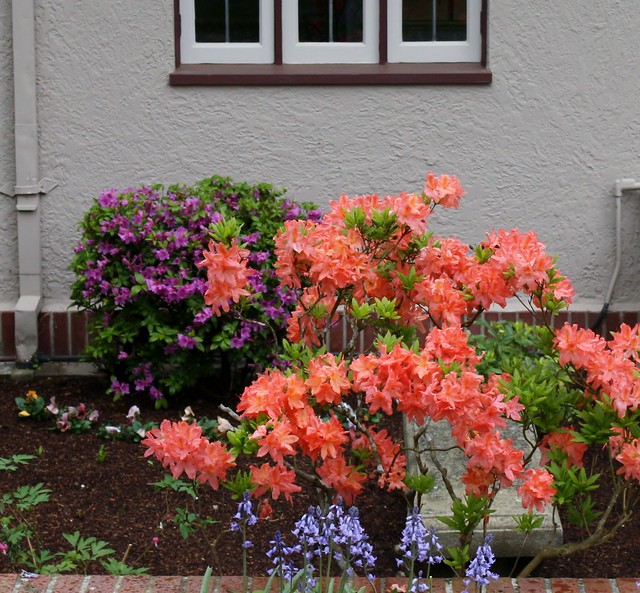

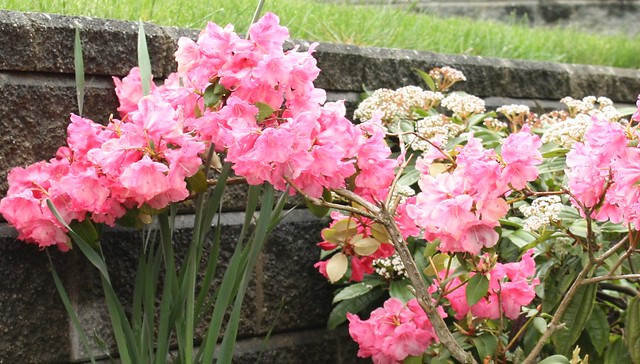
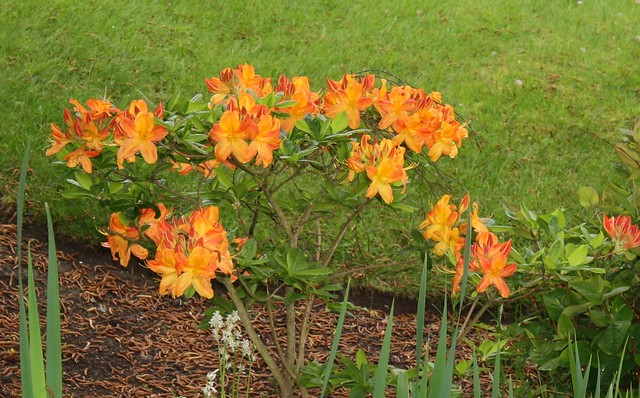
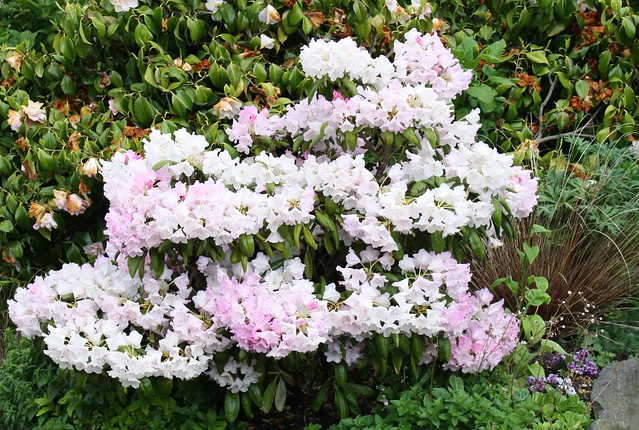
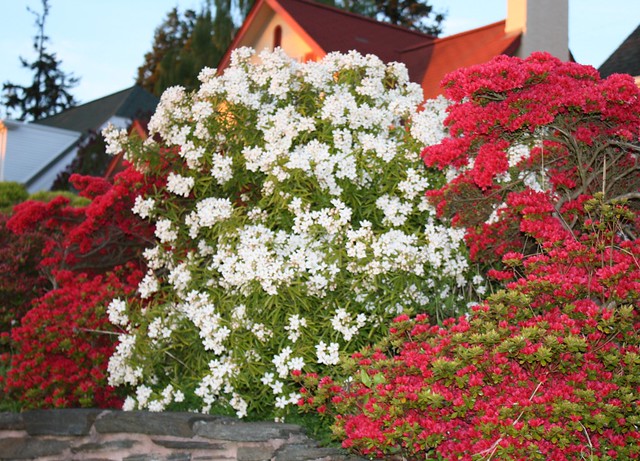
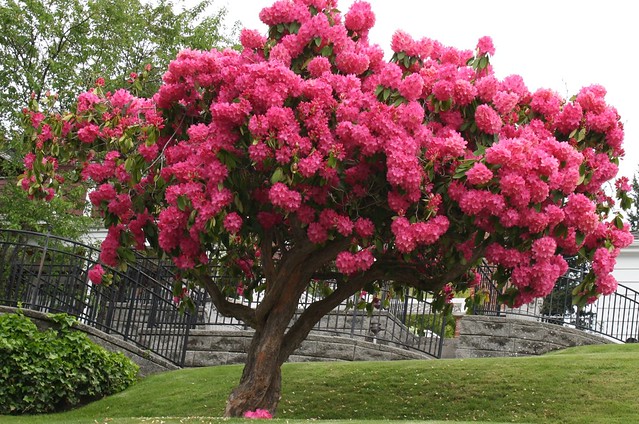
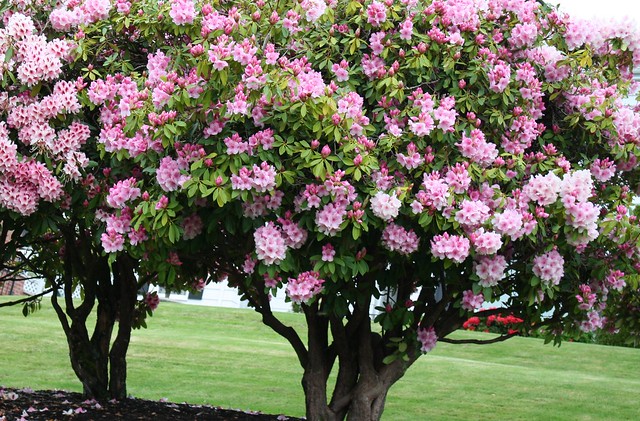

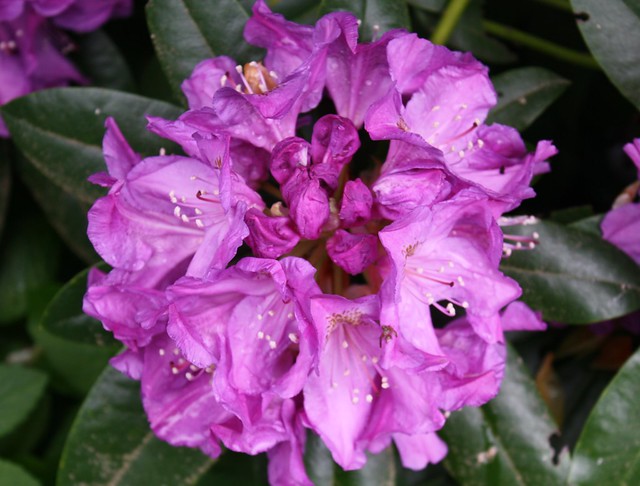
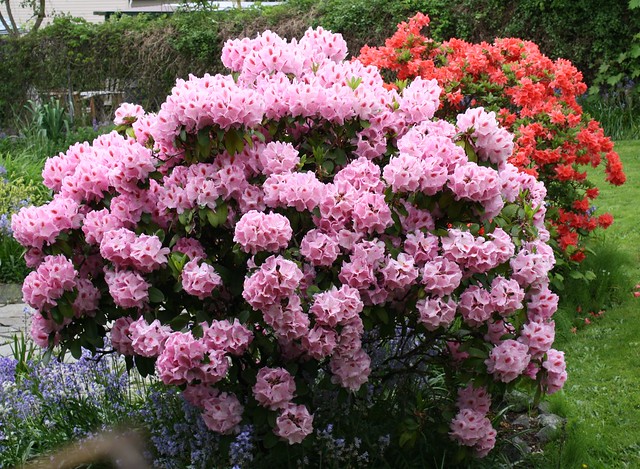
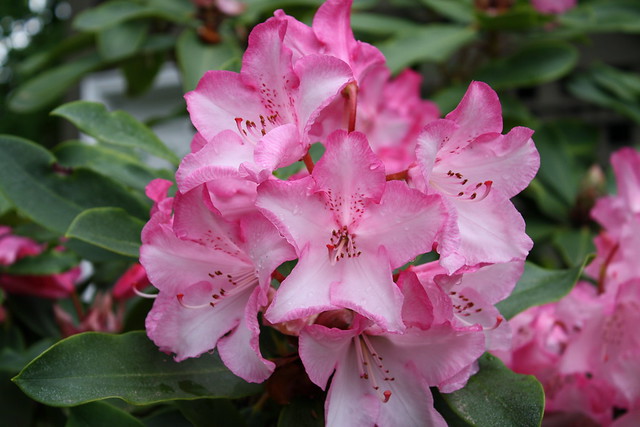
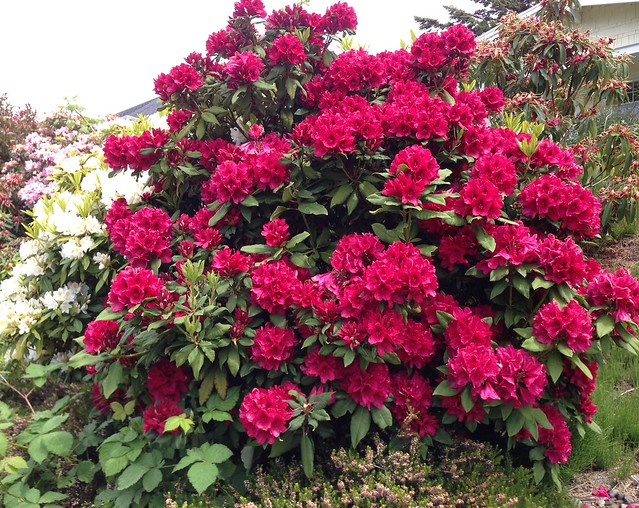

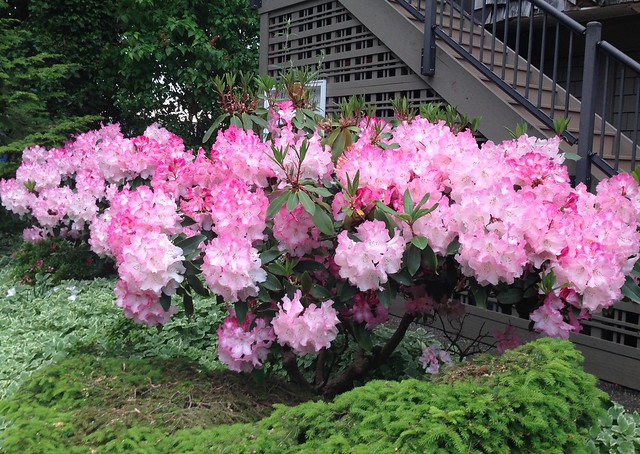
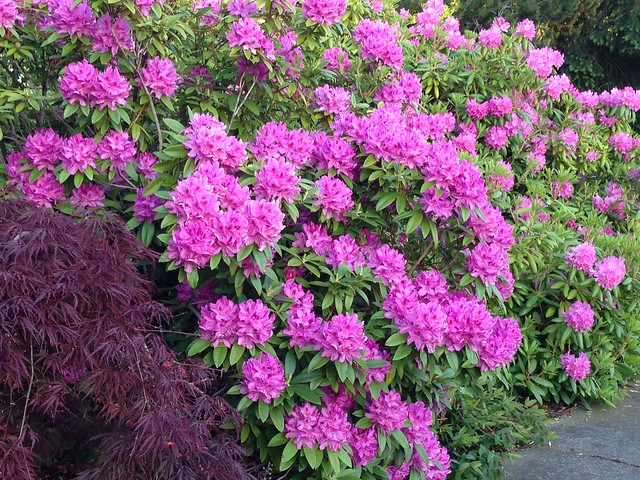

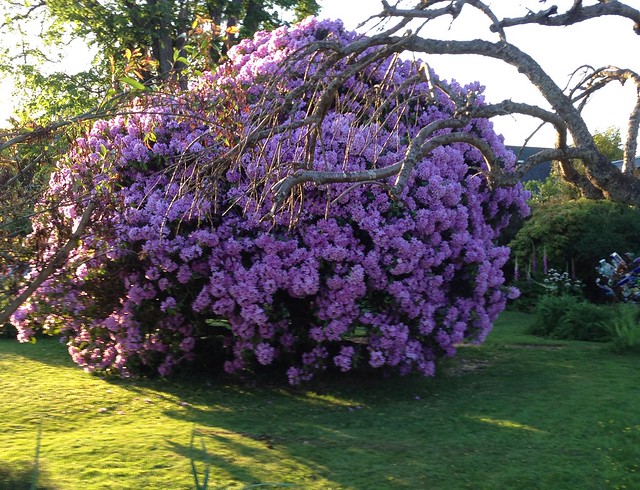
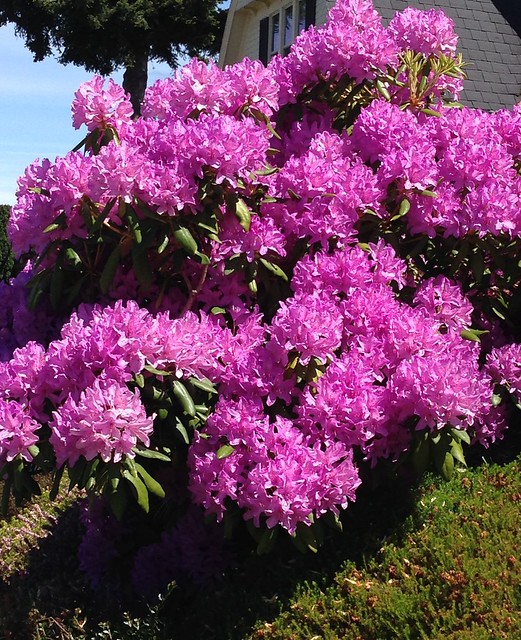
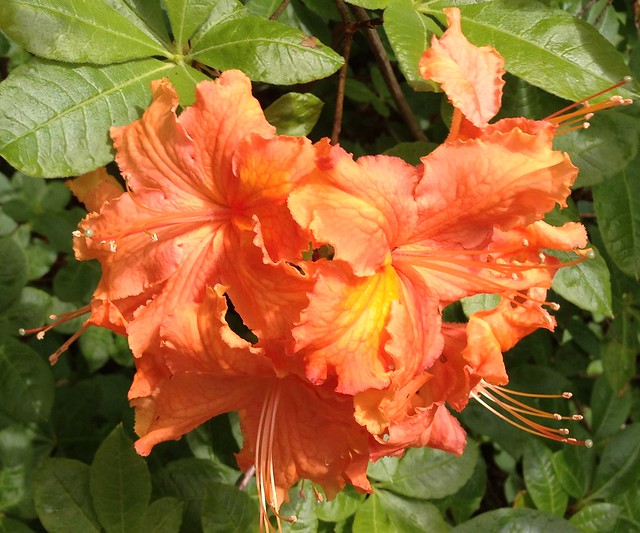
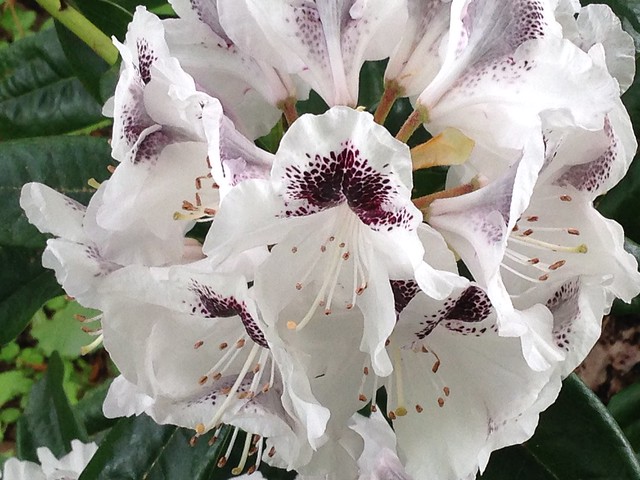
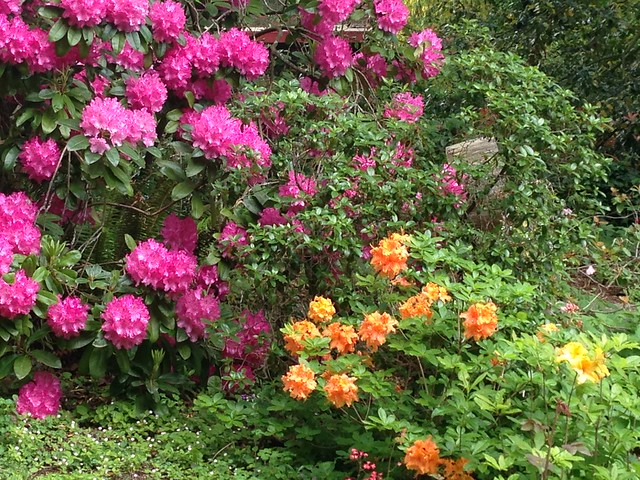
Good morning new Moose folks.
I published this diary last year at Rhododendron time to provide a bit of spring color. It is that time again so here it is again in living color, just as our neighborhood looks today.
Beautiful! I really like the purple ones.
My rhododendron hasn’t bloomed the last couple of years; I think it might be too old. Is there such a thing?
Thanks, RonK!
We don’t have anything that flowery here yet. My tulips are still blooming.
Thanks Ron! The photos do indeed capture the annual beauty of our neighborhood, and the oopsie’s can be cleaned up later!
Stunning!
Thank you.
Wow!! What a way to start the morning! These are fantastic. Many thanks. Mother Nature (and her care takers!)can sure put on a good show!
What beautiful photos, RonK! Many thanks for the diary. Love the huge amounts of color.